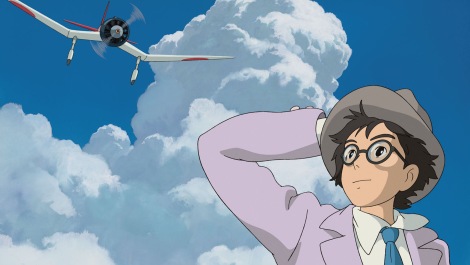The Wind Rises

From Nausicaä Of The Valley Of The Wind in 1984, through My Neighbour Totoro and Kiki’s Delivery Service to Porco Rosso and Howl’s Moving Castle, flight has fascinated – no, make that obsessed – Hayao Miyazaki, presiding genius of Studio Ghibli and animator supreme. And even when his films aren’t directly concerned with fleeting, there’s an stimulating airborne lightness to the style of them that suggest his imagination has taken wing. It’s not so surprising, either: his father was the director of the Miyazaki Airplane company, and during the war the young Hayao grew up in the company town of Utsunomiya.
So for what the 73-year-ancient filmmaker says will be his last movie (though he’s said that before, so there’s hope yet), he pays tribute to the dreamers and visionaries whose creations have given us the power of flight – and which have then, all too often, been turned to ends of death and devastation. For the first time, Miyazaki isn’t production with fiction, nor with fantasy – though dreams figure strongly – but with real-life. The film’s main character, Jiro, is based on aeronautical engineer Jiro Horikoshi, designer of the Mitsubishi A6M Zero, Japan’s most successful fighter plane during WW2. It’s the plane that spearheaded the attack on Pearl Harbor – and for which the Miyazaki company made the rudders.
Jiro’s mentor, at least in his imagination, is the splendid Italian aircraft designer Count Giovanni Caproni, who inspires him, guides him and tells him “aircraft are gorgeous dreams”. But it’s also Caproni who warns him, “Humanity dreams of flight, but the marvel is cursed. Aircraft are destined to become tools for slaughter and destruction.” It’s this tension, between the gentle Jiro’s romanticism and aspiration, and the horrendous uses to which his creations are place, that makes The Wind Rises perhaps Miyazaki’s darkest and most moving film.
For there’s sadness in it too. Jiro meets, loses, then meets again and falls in like with a pretty girl called Nahoko – but she’s suffering from TB and their like is brief, passionate but doomed. This is one of several references to Thomas Mann’s classic novel The Magic Mountain – a subsidiary character is named after Mann’s protagonist, Hans Castorp – and there’s a side glance to Alexandre Dumas’ Camille as well, in the tubercular heroine. The Wind Rises is clearly aimed at adult audiences, in contrast to its predecessor in Miyazaki’s output, the charming but child-oriented Ponyo.
Autobiographical elements crop up, making the film even more of a personal project. En route to university in Tokyo, Jiro is trapped up in the Splendid Kanto Earthquake of 1923. His teach almost derailes and a raging fire – represented as a growling monster – engulfs the city. Memories here, surely, of the firebombing of Utsunomiya in 1945, when the four-year-ancient Miyazaki and his family had to flee the blazing town.
Yet for all these darker intimations, the sheer headlong joy and wonderment, the delight in natural beauty and human creativity that’s always distinguished Miyazaki’s work is never far away. The moment when Jiro meets Nahoko again is sweetly staged: she’s sitting on a hilltop under a broad white parasol when a gust of wind carries it off. Jiro, by chance walking below, catches the cavorting brolly and is dragged off down the hill.
It’s a delightful metaphor for the erotic passion that’s about to sweep him up, and a small but classic example of the transcendental uplift that makes Miyazaki’s work so unique. “Artists are only creative for 10 years,” Caproni tells Jiro in one of their marvel encounters. Miyazaki, luckily for us, has triumphantly broken this rule, having amazed, enchanted and delighted his audiences for near-on 40 years. If The Wind Rises really is his final film, it’s a fittingly impressive conclusion to the career of one of the world’s greatest masters of animation.
![]()












